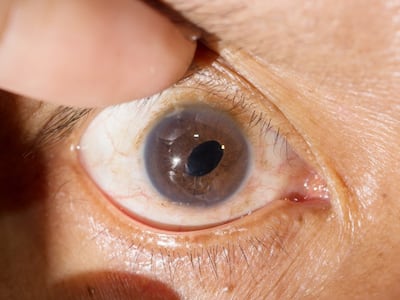VERIFIED By Dr Alpa Atul Poorabia, Senior Consultant Ophthalmologist, Apollo Spectra Hospitals, Hyderabad

With advancements in technology, the future of cataract surgery is even brighter with more developments in vision restoration and improvement of the lives of millions of people around the world.
Modern developments in surgical procedures, especially phacoemulsification, have significantly changed the field through shorter recovery periods, better results, and faster visual restoration with minimal side effects.
The Evolution Of Cataract Surgery
In the past, cataract surgery was a complex procedure that took a long time and was followed by a lengthy rehabilitation process. The prior approach, extracapsular cataract extraction (ECCE), included removing the opacified lens through a large incision. This process requires a lot of healing time and has the potential to develop complications such as infections and prolonged visual impairment.
Advantages Of Phacoemulsification
Phacoemulsification: A Game Changer- The procedure is less invasive and usually involves a 2-3 millimetre incision, ideal for quick healing and minimal complications.
- Reduced Complications: Phacoemulsification is less invasive than other techniques, reducing the possibility of post-operative complications. Less tissue damage means less inflammation, less infection, and a reduced chance of developing astigmatism. Also, applying contemporary viscoelastic agents during the surgery preserves the delicate intraocular tissues, making the surgery safer.
- Enhanced Visual Outcomes: Phacoemulsification is a very delicate process of cataract removal, and combined with the implantation of modern IOLs (Advanced Intraocular Lenses), it provides the best visual outcome. The latest IOLs can also address other pre-existing vision disorders like myopia, hyperopia, and astigmatism and make the patient see better than before the cataract.
- Reduced Recovery Time: Phacoemulsification involves using a small incision that does not need many sutures, thus fast tissue healing. Most patients show a marked improvement in their vision within days compared to the conventional methods we used before.
Femtosecond Laser-Assisted Cataract Surgery (FLACS)
The femtosecond laser has been used in cataract surgery to provide highly accurate results. FLACS employs laser pulses to make the corneal incisions, open the lens capsule, and emulsify the cataract. This level of accuracy improves the standard deviation of the surgeries and minimizes the dependence on hand skills. Patients get better outcomes that are easier to predict and possibly faster healing times.
Advanced Intraocular Lenses (IOLs)
The advancement in the design of the IOLs has gone a notch higher and has made cataract surgery even better. Multifocal and eDOF lenses are a range of vision correction which may minimize or exclude the use of glasses after surgery. New developments in the techniques of IOL implantation, which replicate the human eye’s ability to alter its focus, will offer patients even more freedom regarding vision.
Advances In Cataract Surgery
Particularly, phacoemulsification has transformed the field of ophthalmology. These developments have decreased postoperative time, increased surgical efficacy, and positively impacted patients’ quality of life by enabling faster visual restoration and fewer adverse effects. With advancements in technology, the future of cataract surgery is even brighter with more developments in vision restoration and improvement of the lives of millions of people around the world.
